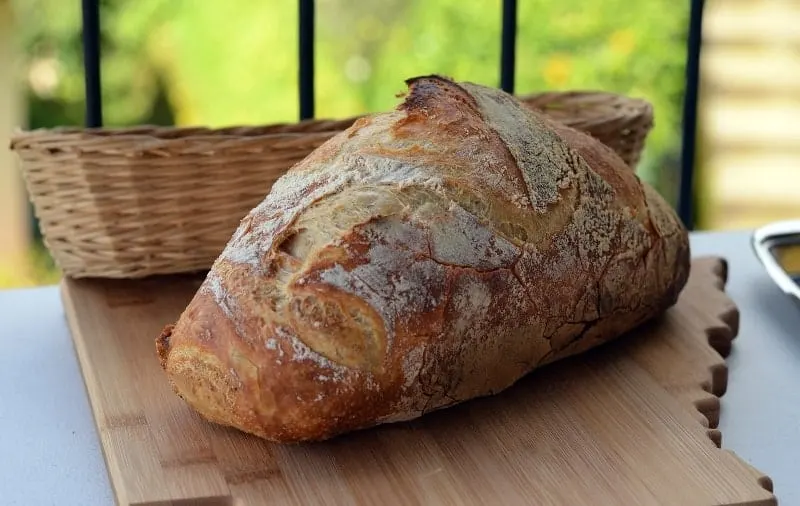As the name suggests, pizza yeast is specifically made for pizza, but, what if you don’t want to just use it for pizza? Maybe you have pizza yeast sitting in your cupboard and want to make bread instead.
Fortunately, it’s not the end of the world if you want to make bread with pizza yeast.
Pizza yeast can be used instead of regular dry yeast when making bread. Although pizza yeast isn’t designed to be used for bread, it can successfully rise dough and give you good results.
On the jar or packet of your pizza yeast, it states that the yeast is ‘NOT‘ recommended for baking bread, but plenty of people have experimented with it and successfully made bread. Whilst regular yeast will give you better bread, it’s still perfectly reasonable to make bread with pizza yeast too.
It may not be recommended because they want the consumer to buy regular yeast too, or it might be because of the slight differences between the yeasts.
Either way, there’s no reason to not use pizza yeast for bread if it’s the only one you’ve got on hand.
What’s The Difference Between Pizza Yeast And Regular Yeast?
Since, pizza yeast and regular dry yeast can be used in the same way, it’s not immediately obvious what the actual differences are between the two, but there is one subtle difference that changes how your dough feels.
Pizza yeast contains dough relaxers that are meant to make dough easier to shape/roll without snap-back.
With regular dough that doesn’t contain dough relaxers, it’s much more likely to pull itself back after you stretch it, but you can easily prevent this by letting it rest for 5-10 minutes so the gluten can relax.
To get one thing clear, pizza yeast is the same yeast as regular dry yeast, but it just has certain additives to make it more suitable for quick and easy pizza dough.
Here’s a video of a home baker using pizza yeast to make some basic bread.
As you can see from the video, the dough has risen and baked as you’d expect with normal yeast. It had a lovely soft texture and she seemed to enjoy the flavor.
Do You Really Need Pizza Yeast?
Since the yeast is called ‘pizza yeast’ a lot of amateur bakers may believe that it’s the only yeast that can be used for pizza, but this is very far from the truth.
Pizza yeast is far from necessary when it comes to making tasty pizza. In fact, it’s actually more likely to taste worse than pizza made with regular yeast.
When regular yeast is used in dough, you allow it to rise once before separating it into smaller dough balls and allowing them to proof again. This allows for the yeast to do their thing and develop both texture and flavor in the dough.
When using pizza yeast, the idea is that you make pizza very quickly. In a matter of 30 minutes, you can go from nothing to pizza dough, so it’s not going to do much in terms of flavor.
The great thing about regular yeast is that the longer fermentation of the dough breaks down the molecules in the flour and allows the flavors to become more complex and taste significantly better.
Pizza yeast also contains added dough relaxers, but these aren’t really necessary either. Although they do make some difference in how easily your dough is shaped into a pizza base, it’s not really needed unless you don’t have much time.
Instead of having dough relaxers, you can just let the dough rest for 5-10 minutes. This allows the gluten to relax on its own so you’ll have an easier time shaping it. If you feel it getting tighter and more difficult to shape again, you should just let it rest for another few minutes.
To Sum Everything Up…
At the end of the day, pizza yeast is just regular dry yeast with a few extras, so it’s still going to be perfectly capable of making good bread at home.
It can be used as normal, but you may notice a slight difference in the feel of your dough since the gluten will relax more.
And although pizza yeast can sound great, it’s a little bit of a gimmick to people who want great-tasting pizza.
For those who just want a quick and easy pizza that’s homemade, it might be worth it since it doesn’t take long to make at all.
Personally, I won’t ever be using it for bread or a quick pizza since I like a long fermentation so the flavors can develop in my dough. I’ll just stick to fresh or active dry yeast.

